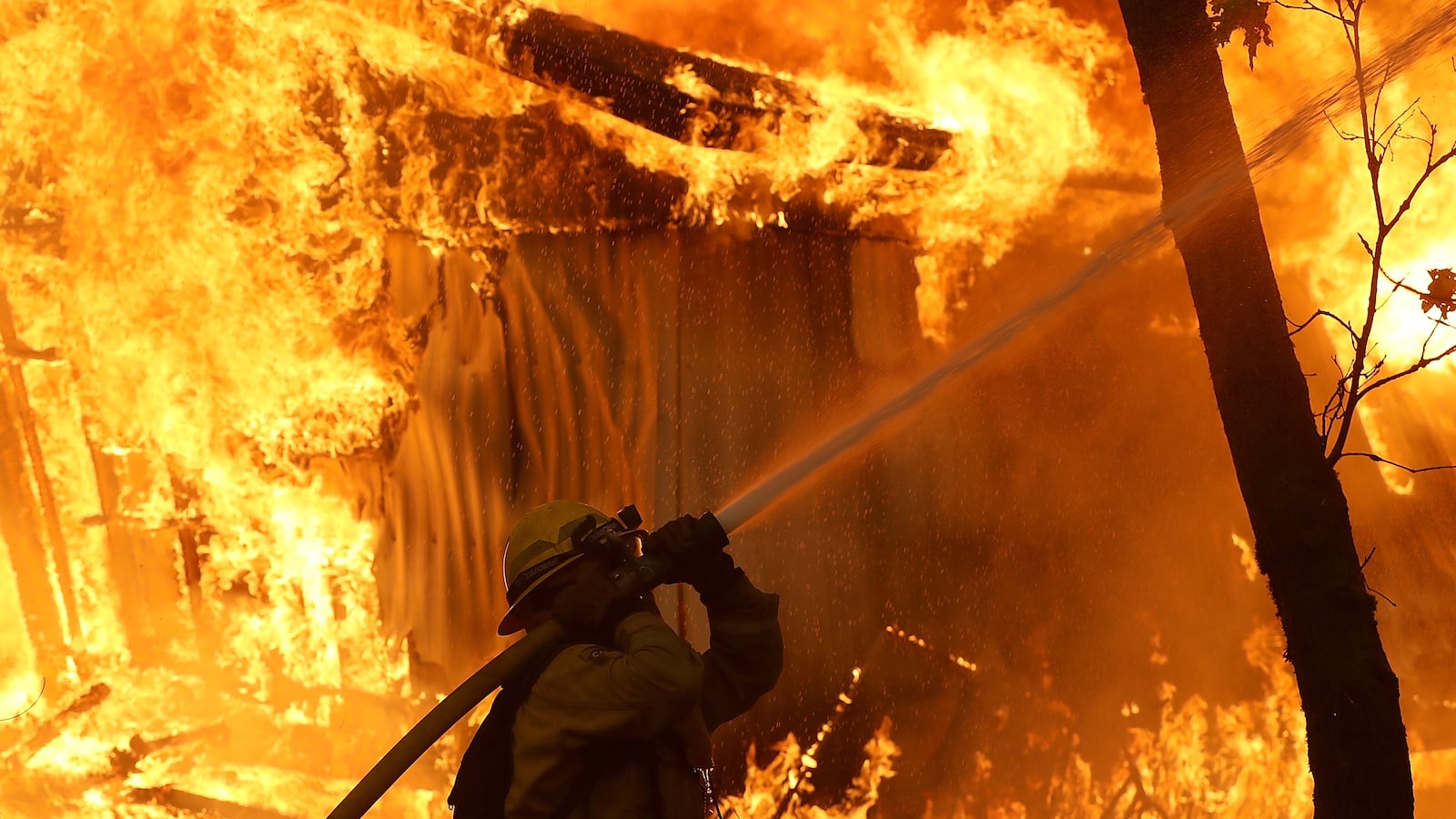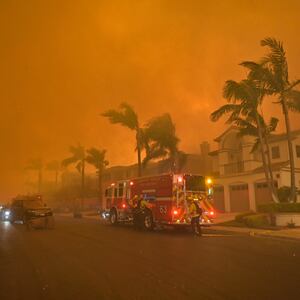Nearly 72 million homes in the U.S. have some risk of being burned by wildfires, according to a new analysis published Monday by the New York nonprofit First Street Foundation. Worse, climate change is expected to cause that number to swell to 80 million over the next 30 years. Though wildfires are most often associated with areas like California, First Street’s analysis shows that more parts of the U.S. will have to contend with unplanned and uncontrolled brushfires raging through their communities. A state like Florida, where 6 percent of all properties are at wildfire risk, will see this proportion double to 12 percent by 2052.
To help homeowners navigate such increased dangers and plan ahead, First Street created Risk Factor, a first-of-its-kind online mapping tool for homeowners on the continental U.S. to see their property’s wildfire risk by ZIP Code. The information will be displayed on real estate websites like Realtor.com.
Such a map is long overdue. The U.S. government maintains flood maps that help homeowners determine their property’s risk to flooding events. But only a few states have maps etching out wildfire risk. Many wildfire-prone states do not require sellers to disclose available information to anyone buying or renting a home, as demonstrated by a 2020 NPR investigation.
This is in spite of the fact that in 2018, Congress issued a mandate that the U.S. Forest Service create nationwide wildfire maps. The result was the Wildfire Risk to Communities, a website that shows which neighborhoods are more or less vulnerable to wildfires. Unfortunately, this effort has been too paltry thus far to provide an assessment of an individual property’s chance of getting caught by a brushfire on the spread.
Climate change is only exacerbating the situation. A recent U.N. report stated that uncontrollable wildfires are projected to globally increase by 14 percent in 2030, by 30 percent in 2050, and by 50 percent by the end of the century. The U.S., is already experiencing the effects, as evidenced by extreme wildfires in California in the last few years, and elsewhere in the southwestern U.S. (a megafire is currently scorching thousands of acres in New Mexico).
First Street’s tool uses computer modeling to simulating how wildfires will look and behave over the next three decades, which is the typical lifespan of a home mortgage, Ed Kearns, a climate change scientist and First Street’s chief data officer, told The Daily Beast.
The computer models were taught to make their predictions after being fed information on the behavior and spread of over 500 historic wildfires. They also incorporated data on the distribution of natural wildlife fuels like trees and vegetation, and how the spread of these fuels is expected to change over time. First Street also incorporated information on the factors that make a house combustible like roof type (e.g. cedar shingles increase risk of burning), building material, and nearby vegetation. Lastly, they included 10 years worth of data on weather patterns from the National Oceanic and Atmospheric Administration to see how events like wind helps spread fires faster and how carbon emissions will influence future weather conditions (thus a fire’s intensity).
“We run every possible permutation of all different kinds of weather, all kinds of ignitions using historical ignition locations and we see what comes out of it,” said Kearns. Based on these simulations, Risk Factor can then predict the likelihood that a house might burn down in the event of a wildfire, on a 10-point scale. The more often a ZIP Code incurred damage in the simulations, the higher the wildfire risk. And over time climate change can cause smaller risks to snowball into bigger ones.
One dataset missing from this risk assessment is how fires create their own wind systems—a phenomenon called a firestorm, Craig Clements, director of San Jose State University’s Fire Weather Lab, said in an email to The Daily Beast. Kearns countered that these are extreme, rare wildfire scenarios and that Risk Factor’s scores should still be pretty accurate even if firestorms aren’t part of the modeling. In any case, First Street will continue to update its modeling based on wildfire frequency, changes in vegetation, and any wildfire mitigation efforts that neighborhoods implement.
“Government reports don’t make climate change a personal connection,” said Kearns. “Our goal is to make climate change personal and encourage people to take action.”







